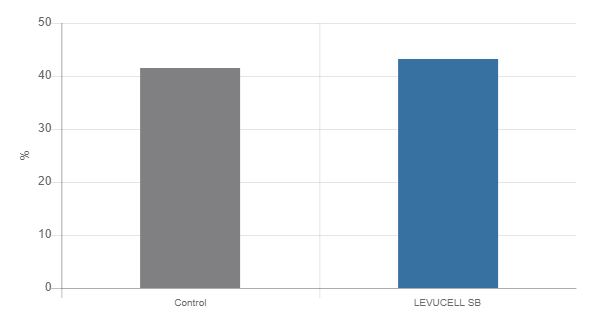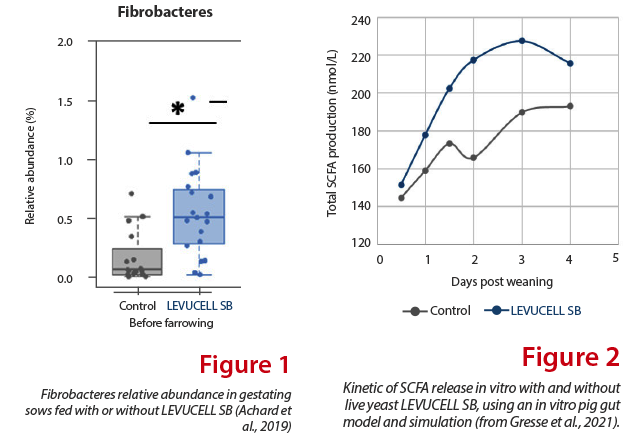Blog | Reading Time 3 minutes
Microbiota modulation for better feed utilization in gestating sows
The benefits of the live yeast Saccharomyces cerevisiae var. boulardii CNCM I-1079 to sow and litter performance are well established. It is now proven that the probiotic, thanks to its interaction with fiber degradation and energy utilization, can significantly improve feed efficiency in sows.
Live yeast effect on fiber degradation
Part of the mode of action of S. c. boulardii CNCM I-1079 (LEVUCELL SB) in the gut of sows has to do with the fast consumption of oxygen carried out by the yeast in the hindgut. This creates better anaerobic conditions where the cellulolytic bacteria can proliferate, leading to an improved fermentation rate. This effect on the fiber-degrading microbiota population, already shown in sows and post-weaning piglets (Figure 1) is confirmed when investigating the microbial short-chain fatty acids (SCFA) production with an in vitro colonic model (Figure 2). As a result, more energy is expected to be released from the same diet.
Benefits to energy utilization
A study conducted in respiratory chambers with fattening pigs (Labussière et al., 2022) enabled researchers to quantify the live yeast’s effect on swine energy metabolism. In non-stressful conditions, the coefficient of metabolizable energy retention was improved by 1.6% vs. the control diet.
This improved efficiency was linked to the more adapted microbiota profile of the pigs, making them able to extract more energy from the feed, especially from the fiber fraction. This figure could be even more important when we transfer this to sows, for which the amount of fiber in the diet is much higher and the importance of improving the fermentative capacity is crucial.
Table 1. Effect of the live yeast Saccharomyces cerevisiae boulardii CNCM 1079 on the ratio between retained energy and metabolizable energy (Labussière et al., 2022)
The benefits of S. c. boulardii CNCM I-1079 on energy extraction from fiber and improved metabolism is of great interest in all type of swine, but it has an additional value in gestating sows, where it should be considered to regulate intestinal transit, favor farrowing conditions, and improve the colostrum quality and piglet quality at birth.
Published Jul 22, 2022 | Updated Jun 7, 2023
Related articles
Need specific information?
Talk to an expert